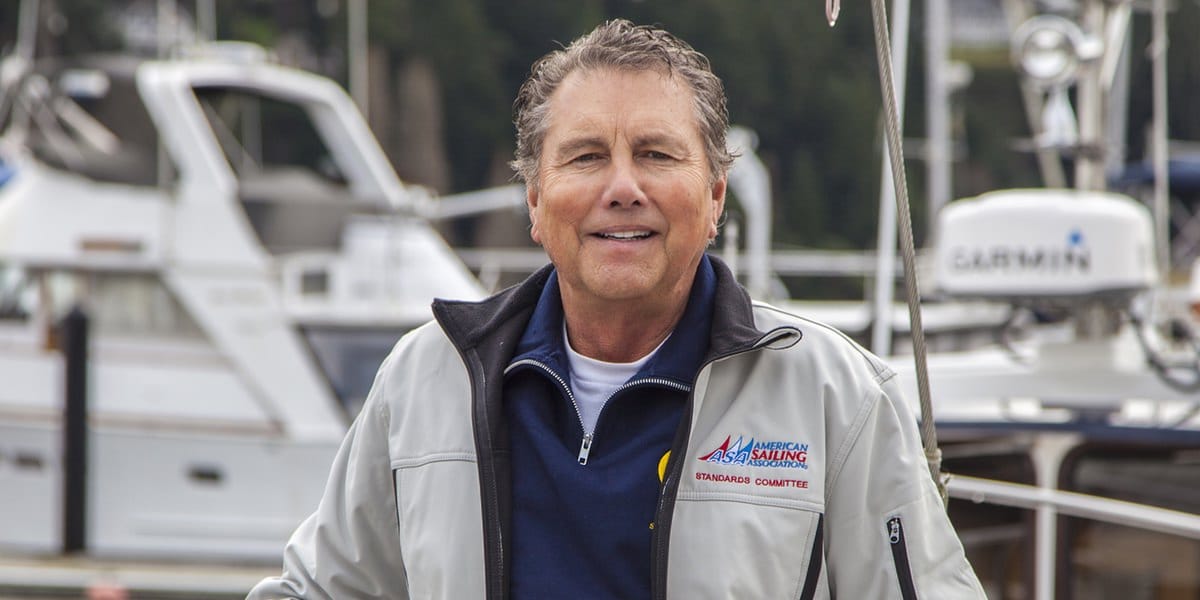Mike Rice is an eight time recipient of the American Sailing Association’s Outstanding Instructor honor and has been teaching sailing at his sailing school, Puget Sound Sailing Institute, for over 30-years. Rice is at the top tier of sailing instruction and weighed in with his views on sailing safety.
ASA: How much emphasis do you place on the safety element when teaching sailing? Do you approach it in a subtle way or more forcefully?
Rice: Our priority has always been that safety is the first issue we discuss – it’s really the most important issue. In my mind, when you’re safe, you are having fun and preparing people well is the key to being safe. And when you get into things like offshore sailing at night where there are harnesses, tethers, jacklines – these kinds of things; safety then becomes an even larger issue.
What, in your mind, is the most important safety tip/concept that you instill in new sailors?
Rice: To always be aware – to be conscious about what’s going on all around, especially the wind and the water. We teach students to look at the water to tell us what the wind is doing – to predict gusts, also to be mindful of the boom, how to walk on the boat – things like that. Awareness is crucial to not being caught off guard.
Are there some students where fear is something you have to address and if so, how do you negotiate that fear?
Rice: Absolutely. We encourage them to express those kinds of feelings and then we deal with them. Their fear is real. I find most fears are a lack of knowledge and/or a lack of control. So if we have a student who is just petrified when the boat heels just 5-degrees, the first thing I’ll do is to put them on the mainsheet and say, “you’re in control of how much we heel.” After being in control for a while, typically, these kinds of students begin to lose that fear.
Have you ever had to manage an emergency at sea with students on board?
Rice: Yes – we were out in the Tobago Cays in the middle of nowhere when a hose blew and we began taking on water. The pumps were keeping up so it actually turned out to be a great teaching opportunity. I went through the possible causes of the problem one by one until we determined it was a blown hose and we closed the through-hull.
We’ve also had a dismasting once, we had a below-the-water-line cockpit drain on a small boat blow… but with all of these things the key is to be calm. They are looking at you, so if you’re calm then they’re okay with it. And that same idea goes for being a skipper. If something unforeseeable happens, the skipper needs to stay cool-headed and, in all likelihood, the crew will act similarly.
Any other important thoughts about safety you want to pass on?
Rice: Just to remember that if someone were to fall off the boat without a PFD in cold water, they will quickly lose the ability to swim. A lot of people don’t realize that in that event, all the blood starts rushing to their core and their body’s become very compromised. Wear that PFD!












